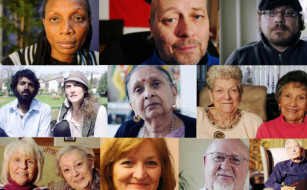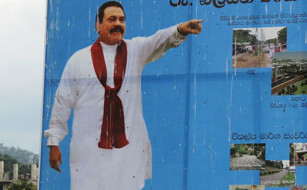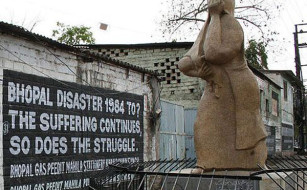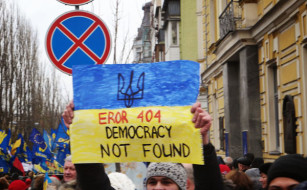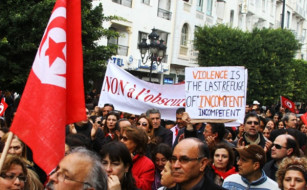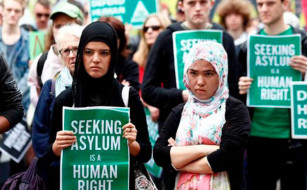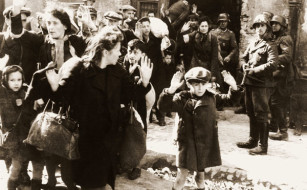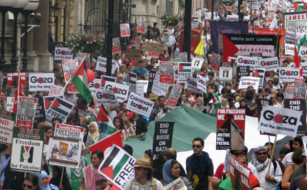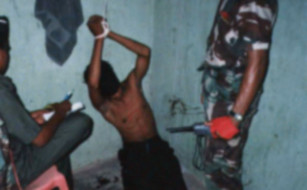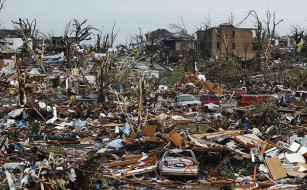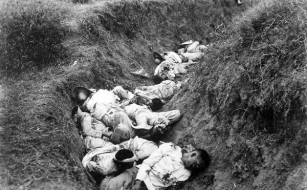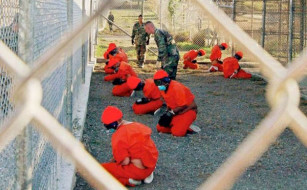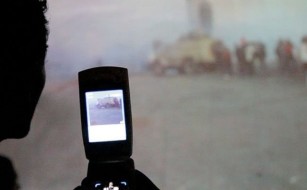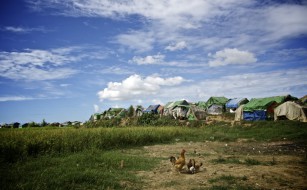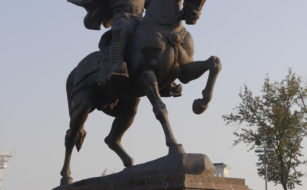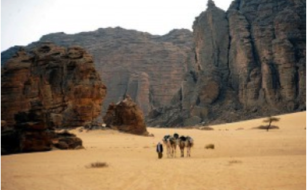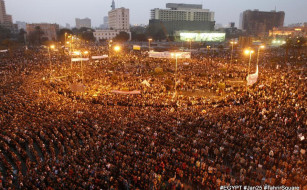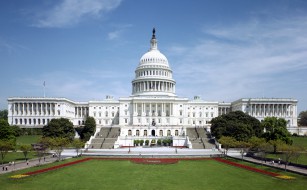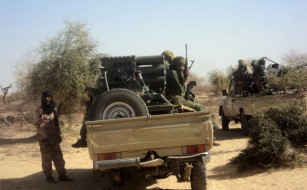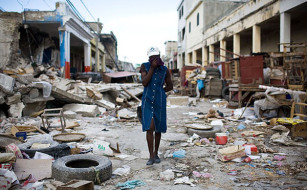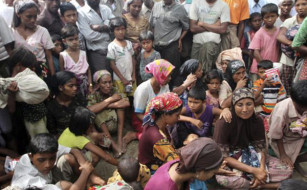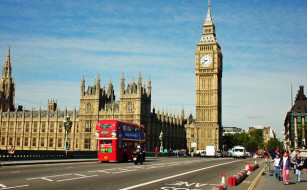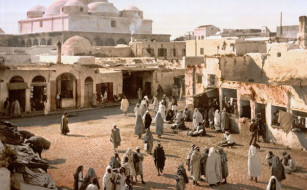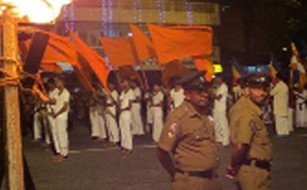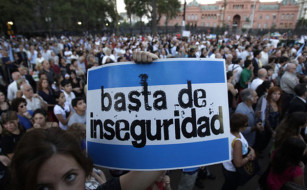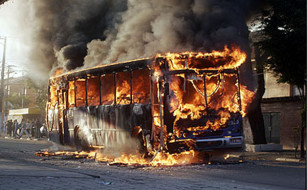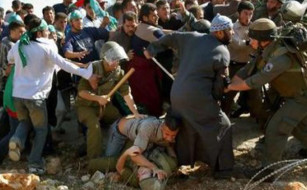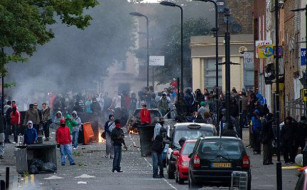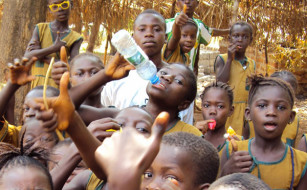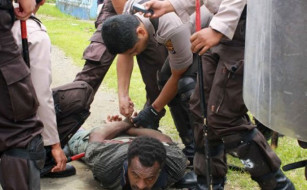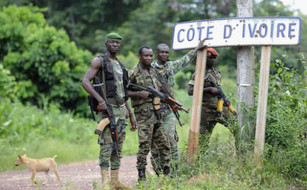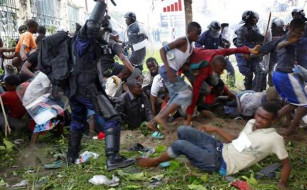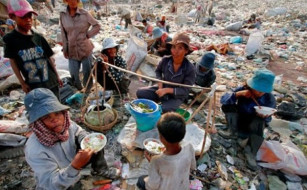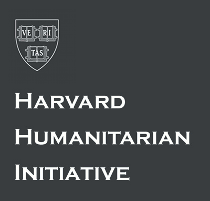Gendered State Crime & The Power of Women-led Civil Society in Syria
Since the current conflict began in March 2011, Syrian women have seen their bodies turned into battlefields as mass wartime rape and other forms of sexual and gender-based violence (SGBV) are used as weapons of war. While exact numbers of rape and sexual violence are nearly impossible to determine due to the silence surrounding such crimes compounded by the difficulty of wartime documentation, it is undeniable that sexual violence against women and girls has been a “core component” of the Government of the Syrian Arab Republic’s (GoS) strategy to suppress opposition and maintain control.[1] Specifically, the GoS systematically wielded rape and sexual violence as a tool to punish, humiliate, and destroy perceived enemies and opponents during house raids, at checkpoints, and in detention centers—a practice which has disproportionately affected Syria women and girls.[2]
Over a decade since the start of hostilities and with President Bashir al-Assad still firmly in power, many believe that the individual criminal responsibility of Assad and other senior leaders of the GoS responsible for the widespread and systematic perpetration of such crimes may never be adjudicated before an international accountability mechanism. However, state crime theory presents an alternative lens from which to view such crimes, lending alternative means of accountability than merely international justice and adjudication. Namely, through bolstering woman-led civil society organizations in Syria, the horrors endured by Syrian women and girls may finally be understood, addressed, and potentially used to fuel change in post-conflict Syria. While rape and other forms of SGBV do not constitute the only forms of gendered state crime that Syrian women and girls have fallen victim to over the past decade,[3] they are the focus of this Article.
Gendered State Crime in the Syrian Conflict
The Framework
Men, women, and children experience state crime differently based on their gender or perceived gender identity and the proscribed roles and attributes the state-perpetrator inevitably ascribes to them.[4] Women and girls are generally targeted through sexual and gender-based violence which is different than the form of violence men and boys are targeted with.[5] This point is so critical and yet strangely overlooked.
The state is an “overrepresented,” direct perpetrator of violence against women—systematically victimizing women, especially in the midst of conflict, as rape and other forms of sexual and gender-based violence are wielded as weapons of war.[6] In conflicts, states can abandon their roles as protectors of the civilian population and purposefully and overtly target the civilian population generally and women’s bodies specifically due the patriarchal notions and stigmas surrounding women’s sex, gender, and bodies and their importance to a particular ethnic, religious, cultural, or political community.[7] However, in light of the prevalence of such crimes, “there has been little attention paid to the role of the state as a perpetrator of gendered-violence—especially conceptualizing such harms as state crime.”[8]
Criminologist Victoria E. Collins has led efforts to “address this void” alongside other state crime scholars[9] by studying state perpetrated violence against women “during times of both peace and conflict.”[10] This Article thus seeks to examine gendered-aspects of state crime through the lens of sexual and gender-based violence perpetrated by the GoS against women and girls since 2011, specifically applying Collins’ theoretical framework of “state-perpetrated gender-based violence”[11] to examine the culpability of the Syrian state.
State-Perpetrated Violence in the Syrian Conflict
Throughout the decade-long conflict,[12] the GoS, under the control of Bashar al-Assad, has “systematically used rape and sexual violence as a tool to victimize and humiliate its perceived enemies.”[13] Specifically, rape and SGBV were a prominent feature in the government’s scheme to suppress the opposition and destroy their family and community structures.[14] Between 2011 and 2015 alone, the Syrian government was responsible for 62 percent of rapes and aligned, pro-GoS militias were responsible for another 23 percent.[15] Thus, in order to see how sexual violence in the Syrian conflict can be viewed as state crime, it is critical to understand the government’s organized and systematic instrumentalization of “sexual violence militarily and politically” as a part of the “regime’s policy of repression” and “strategy to defeat and subjugate the opposition.” [16] Such a widespread scheme implicates the entire state organization—from high-level officials to security forces, to intelligence agents, soldiers and paramilitary.[17] While various NGOs have documented such crimes, on 8 March 2018, the Independent International Commission of Inquiry on the Syrian Arab Republic presented a report summarizing its findings on the horrifying reality of CRSGBV in the Syrian conflict through December 2017 before the thirty-seventh session of the Human Rights Council.[18] This Section relies in large part on the findings of this report.
With the start of anti-Government protests in March 2011, the GoS began its terrorizing ground operations characterized by mass arrests and house-to-house searches for perceived anti-Government enemies and opponents by the Syrian army initially and Shabbiha thereafter (pro-Government militias).[19] These searches were conducted in pro-opposition or anti-Government neighborhoods at night,[20] a visible attack on the opposition family structure at a time when all family members would be present in the home. While men were typically arrested during such searches, women and girls were subjected to sexual violence—reflecting a government policy embodied in the phrase: “Your men in our prisons, your women on our laps.”[21] The goal of such attacks on women and girls was suppression of the opposition through instilling terror, fear, and humiliation.[22] Sexual violence during such searches included rape, often gang-rape, of several girls and women within the household of varying ages. Women were occasionally also raped in public or even “forced to walk naked in the streets.”[23] Sexual violence during house raids was a “pattern observed countrywide.”[24] Women and girls were also killed or arrested following their rape and taken to detention facilities as a means of further suppressing the opposition.[25]
Women—particularly Sunni, anti-Government activists or relatives of oppositionists, protestors, or defectors—were also arbitrarily detained and arrested at checkpoints. According to the report, “[f]rom the moment of arrest and throughout detention,” these women and girls—aged nine to forty-five—were subjected to different types of sexual violence such as “rape, sexual torture, sexual abuse, and humiliation.”[26] Upon arrival to detention facilities, women experienced invasive searches which in many cases amounted to rape.[27] Women were threatened with rape during interrogations into “their own or their relatives’ involvement with the opposition” or even forced to be naked as a means to force confessions and as a form of punishment.[28] Women were also raped in front of other detainees, as well.[29] Other forms of sexual violence during detention includes forcing women to “dance or serve drinks to officers while naked.”[30] By 2015, there were 7,500 confirmed cases of women raped by government forces in detention—most likely a gross underestimate.[31]
Such violence would be perpetrated most often by a low-ranking officer, though sometimes also by high-level officials, as well. In some instances, several perpetrators would be implicated in a particular incident.[32] The report highlights that: [33]
officers of the Syrian forces were not only aware of sexual violence perpetrated against women and girls but that they ordered it or were themselves the perpetrators. In cases when there was no direct involvement of an officer, the widespread nature of sexual violence throughout detention facilities under Government control suggests that it was a practice sanctioned by higher levels.
Moreover, such instances occurred on a widespread and systematic scale as rape of women and girls in detention was documented in nearly 20 government political and military intelligence branches.[34]
The use of rape and SGBV by the Syrian regime against women was a deliberate attempt to wield a specific type of physical and psychological torture that would result in the greatest harm to anti-Government and opposition families, communities, and structures. As discussed in previous work,[35] the use of rape and sexual violence as a tool of war and suppression in this way resulted in far-reaching ripple effects beyond the individual female survivor: to assault and fragment their family and community.[36] Thus, the GoS’s crime is not a crime against the individual woman herself, but a targeted and deliberate crime against her family and community for the purpose of assaulting and destabilizing it.[37] For example, following their rape, survivors were exiled, abused, alienated and ostracized from their families and communities—referred to as familial and communal rejection—due to societal norms and attitudes surrounding rape.[38] Women are viewed as impure as a result of having sex outside of their marriage, thus bringing misfortune to their home and community, leading some to perceive them as collaborators with enemy attackers—sometimes leading to honor killings by family members.[39] Male relatives are indirect victims as they are purposefully made to feel they have failed their societal role as protectors in failing to prevent the rape of their wives, daughters, sisters and mothers such that their rejection of survivors is viewed as justifiable—further destabilizing the family unit.[40] Thus, as a result of such cultural stigmas surrounding rape and sexual violence, women who were once the foundation of their community are removed from the family and community unit, subsequently destabilizing it and preventing reconstruction and peace—an undeniable illustration of the power of rape as a strategic weapon of war in the hands of the Syrian state apparatus.[41] Such reactions are reflective of a society deeply committed to traditional gender norms, reflected not only in societal practices such as honor killings but even the Syrian government’s own legal code as it relates to the impunity of rapists.[42] One woman describes the situation of Syrian women as being “trapped between traditions on one side and the regime on the other.”[43] As a result of such further victimization and fear of further retaliation, Syrian women seldom speak out about the violence they experience, further ensuring impunity for the GoS.[44]
Accountability for State Crime in Syria: Female-Led Syrian Civil Society Organizations
While there has been incredibly important work done to highlight rape in the Syrian conflict as seen in the example of the COI’s report amongst others,[45] failing to recognize systematic and organized pattern of sexual violence by the GoS fails to take into account the full reality of rape and SGBV as a state sanctioned act deserving of state-wide accountability. Thus, by framing the horrific violations discussed here as state crime rather than crimes against humanity, war crimes, or human rights violations, Syrian women are provided with a greater means of redress than merely adjudication under international justice mechanisms.
Specifically, Penny Green and Tony Ward suggest that accountability for state crimes lies in the hands of civil society organizations who, through “unimaginable courage,” are perhaps better suited than international adjudication and accountability to brining state crime under control.[46] The role, according to Green and Ward, of civil society is “collectively and publicly communicating demands and expectations to the state.”[47]
In the case of Syria, women-led civil society organizations have both labeled and resisted the perpetration of such SGBV crimes.[48] Such CSOs have identified the GoS’s acts as state crime and bolster survivor and victim voices in articulating what crimes they endured and centering public pressure against the Syrian state apparatus on survivors’ voices to both create knowledge and bring about social and cultural change in Syrian society and law regarding sexual and gender-based violence.[49] Support for such groups will build upon the “conceptualization of resistance and gender-based crime”[50] and support a “gendered form of resistance to state crime.”[51] According to Collins, “[t]here is a long and rich history of women organizing and resisting state crime, giving voice to the harms that have been perpetrated as well as advancing pragmatic solutions that have resulted in social and cultural change.”[52]
While criminal adjudication remains an ongoing pursuit, notwithstanding successes in universal jurisdiction cases against former Assad regime officials such as Anwar Raslan in Germany,[53] the international community must focus on supporting women-led Syrian civil society organizations seeking to hold the regime accountable for its widespread perpetration of SGBV; to change policies such as laws on rape; and to bring about spill-over effects of gender equality. Such groups the international community must aim to bolster include, but are not limited to:[54]
- Women Now for Development,
- Release Me,
- Start Point,
- Syrian Women’s Network,
- Syrian League for Citizenship,
- Women’s Association in Atareb,
- Al Wafa Charity Organization,
- Souryana Alamal,
- Syrian Lights,
- Radio Souriat,
- Syiran Democracies Organization,
- Al Kawakibi Organization for Human Rights,
- Syrian Female Journalists Network,
- Urnammu for Justice and Human Rights,
- Masar Research Centre,
- Dawlaty,
- Musawa,
- Sawa for Development and Aid,
- Damma Women’s Network,
- Citizens for Syria, and
- Badael
Conclusion
The Syrian apparatus leveraged social stigmas surrounding rape and sexual violence to destroy the opposition by instituting an organized campaign against the bodies of women and girls. However, through the brave work of women-led Syrian NGOs, accountability of the Syrian state is still possible.
Such mass, systematic and organized sexual violence and its sheer magnitude of impact on a society can create a possible tipping point for the emergence of new societal norms surround rape as the community and its previous norms are destabilized by the conflict.[55] Syria’s incidence of rape and sexual violence can almost certainly ignite changes in post-conflict society; however, these changes may remain insignificant in the face of continued norms of impunity, judicial weakness, and post-conflict instability without international support to bolster the work of women-led CSOs.[56] Through such support, these CSOs can not only hold the Assad regime accountable for its violence against women during the conflict, but can also fight for change in treatment of survivors of sexual violence reflected in Syrian laws and Syrian society that allow for the reintegration of survivors into society—ultimately leading to broader spillover effects of gender equality.[57]
Bibliography
[1] Layla Abi-Falah, Reintegration of Female Rape Survivors: The Overlooked Priority of Transitional Justice in the Face of Mass Wartime Rape, William & Mary Journal of Race, Gender, and Social Justice, 26(2), pg. 444.
[2] Human Rights Council, “I Lost My Dignity”: Sexual and Gender-Based Violence in the Syrian Arab Republic, U.N. Doc A/HRC/37/CRP.3, 1 (Mar. 8, 2018), https://www.ohchr.org/Documents/HRBodies/HRCouncil/CoISyria/A-HRC-37-CRP-3.pdf; Amanda Erickson, ‘I screamed, but no one came’: The horrifying sexual violence facing Syria’s women and girls, The Washington Post (March 16, 2018), https://www.washingtonpost.com/news/worldviews/wp/2018/03/16/i-screamed-but-no-one-came-the-horrifying-sexual-violence-facing-syrias-girls/.
[3] For an overview of other forms of gendered state crime perpetrated by the Syrian state, see Victoria E. Collins, State Crime, Women & Gender, 73 (1st ed., 2015).
[4] Id. at 20, 71.
[5] Id. at 71.
[6] Id. at 1-2.
[7] Id. at 6, 62-4.
[8] Victoria E. Collins, Gendered Forms of State Crime: The Case of State Perpetrated Violence against Women in The Routledge International Handbook of the Crimes of the Powerful (Gregg Barak, ed., 2015), at 348.
[9] A. Ballinger, Gender, Power and the State: Same as it Ever Was?, in State Power Crime (R. Coleman et al., eds., 2009); R. Barberet and K. Carrington, Globalizing Feminist Criminology: Gendered Violence (2018); see also E. Lenning and S. Brightman, Oil, rape and state crime in Nigeria, 17 Critical Criminology 35 (2009); C. Mullins and D. Rothe, The forgotten ones, 15 Critical Criminology 135 (2007); C.W. Mullins, ‘We are going to rape you and taste Tutsi women’, 49 British Journal of Criminology 719 (2009).
[10] Collins, supra note 8, at 349.
[11] Collins, supra note 20.
[12] The years between 2011-2014 saw the greatest documented cases. Marie Forestier, ‘You Want Freedom? This is Your Freedom’: Rape as a Tactic of the Assad Regime, LSE (Feb. 1, 2017), https://blogs.lse.ac.uk/wps/2017/02/01/you-want-freedom-this-is-your-freedom-rape-as-a-tactic-of-the-assad-regime-marie-forestier-32016/.
[13] Erickson, supra note 2.
[14] Id.
[15] Syria’s Women: Policies & Perspectives, The Tahrir Institute for Middle East Policy, https://timep.org/syrias-women/violence-against-women/violence-against-women/.
[16] Forestier, supra note 12.
[17] Id.
[18] Supra note 2.
[19] Human Rights Council, supra note 2.
[20] Id.
[21] Id.
[22] Id.
[23] Id.
[24] Id.
[25] Id.
[26] Id.
[27] Id.
[28] Id.
[29] Id.
[30] Id.
[31] Opposition: Assad Forces Torturing Women & Children in Syria, Middle East Eye (Fb. 12, 2015), https://www.middleeasteye.net/fr/news/opposition-assad-forces-torturing-women-and-children-syria-1103448811.
[32] Human Rights Council, supra note 2.
[33] Id.
[34] Id.
[35] Abi-Falah, supra note 1; Layla Abi-Falah, Silent No Longer: Reintegrating Female Rape Survivors in Post-Conflict Society, PROJECT ON INT’L PEACE & SEC. 1, 3 (2017).
[36] Abi-Falah, supra note 1, at 429-30.
[37] Id. at 428.
[38] Human Rights and Gender Justice Clinic (City University of New York School of Law), MADRE, Women’s International League for Peace & Freedom, Human Rights Violations Against Women and Girls in Syira: Submission to the United Nations Universal Periodic Review of the Syrian Arab Republic (25 July 2016), https://www.upr-info.org/sites/default/files/document/syrian_arab_republic/session_26_-_november_2016/js7_upr26_syr_e_main.pdf.
[39] Abi-Falah, supra note 1, at 430.
[40] Id. at 429.
[41] Id. at 428, 430.
[42] Id. at 445-46.
[43] Id. at 446-47.
[44] Forestier, supra note 12.
[45] Id.
[46] Penny Green & Tony Ward, State Crime: Governments, Violence and Corruption 209 (2004).
[47] Id. at 187.
[48] Collins, supra note 270.
[49] Victoria E. Collins, Looking to Critical Criminology to Centre Gender and Violence Against Women in State Crime Studies, 60 Howard Journal of Crime & Justice 370, 375-6 (2021).
[50] Sara Maher, Southern Sudanese Women’s Resistance to State Crime, 5 State Crime Journal 268, 270 (2016).
[51] Id. at 277.
[52] Collins, supra note 49, at 375-6.
[53] “The Trial of Perpetrators of Sexual Violence Crimes in Syria Has Begun:” Intellectual Dialogue Seminar in Shams Workshop, Syrian Women’s Network (July 13, 2020), https://swnsyria.org/?p=12769.
[54] List compiled with the support of specialists and advocates in the ATLAS Network (https://www.atlaswomen.org/; see also Submission to the United Nationals Special Procedures on Discrimination and Violence against Syrian Women in Law and Practice (Sept. 25, 2020), https://www.urnammu.org/submission-to-the-united-nations-special-procedures-on-discrimination-and-violence-against-syrian-women-in-law-and-practice/; Feminist Movement for Change in Syria: Partner’s Brief, WILPF, https://www.wilpf.org/wp-content/uploads/2020/02/partnersbrief_feministmovement.pdf.
[55] Abi-Falah, supra note 1, at 444.
[56] Id. at 447.
[57] Abi-Falah, supra note 35, at 7.
[ISCI Intern Article]



